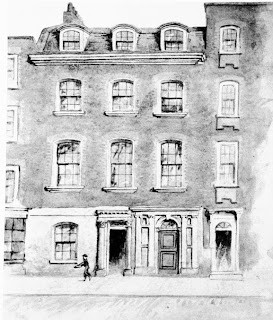John Jackson won the title Champion of England in 1795 at the age of 26, beating the celebrated boxer Daniel Mendoza at Hornchurch in Essex. Jackson was five years younger, 4 inches taller, and 42 lbs. heavier. The bigger man won in nine rounds, paving the way to victory by seizing Mendoza by his long hair and holding him with one hand while he pounded his head with the other. Mendoza was pummelled into submission in around ten minutes. Since this date boxers have worn their hair short.
Following this fight Jackson, who was friendly with the fencing master Henry Angello, set up a boxing academy for gentlemen at 13 Bond Street, London and which was next to Angello's fencing school, from where many gentlemen were directed. Jackson's Saloon soon became popular with the nobility and gentry. Lord Byron relates in his diary that he received instruction in boxing from Jackson.
Jackson died in 1847 and his memorial can be seen in Brompton Cemetery
(Nearest tube Green Park for 13 Bond Street and Earl's Court or West Brompton for the cemetery).

















